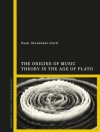Flute Sight-Reading 1 aims to establish good practice and provide an early introduction to the essential skill of sight-reading. Sight-reading in some form should become a regular part of a student’s routine each time they get out the flute, and this book aims to establish the habit early in a student’s learning process.
There are 8 sections, which in a logical sequence gradually introduce new notes, rhythms, articulations, dynamics and Italian terms – much as you would find in a beginner’s flute method. The emphasis is on providing idiomatic tunes and structures rather than sterile sight-reading exercises. Each section contains several solo examples, beginning with only three notes, and concludes with duets and accompanied pieces, allowing the student to gain experience of sight-reading within the context of ensemble playing.
Inhoudsopgave
To the Pupil: Why sight-reading? – Section 1: Notes G, A, B – Section 2: Notes G to C; slurs and quavers – Section 3: Introducing F and Bb – Section 4: Notes F to D, with F# and Bb – Section 5: Extending the range to top A – Section 6: Introducing compound time – Section 7: Increasing range: Low Eb/D# up to high Bb/B – Section 8: Semiquavers in simple and compound times – Glossary
Over de auteur
John Kember studied at Trinity College of Music, London and has enjoyed a varied career in both performing and academic spheres, ranging from teaching in schools and privately, to working as composer, arranger, pianist and conductor in Concert Halls, theatres and recording studios. Currently John is working on a number of new and exciting projects for both publication and performance. He has a busy private teaching practice in south east London and teaches for Kent Music School and the Kent Centre for Young Instrumentalists in Maidstone. John was an examiner for the Associated Board of the Royal Schools of Music from 1989 until 2005












